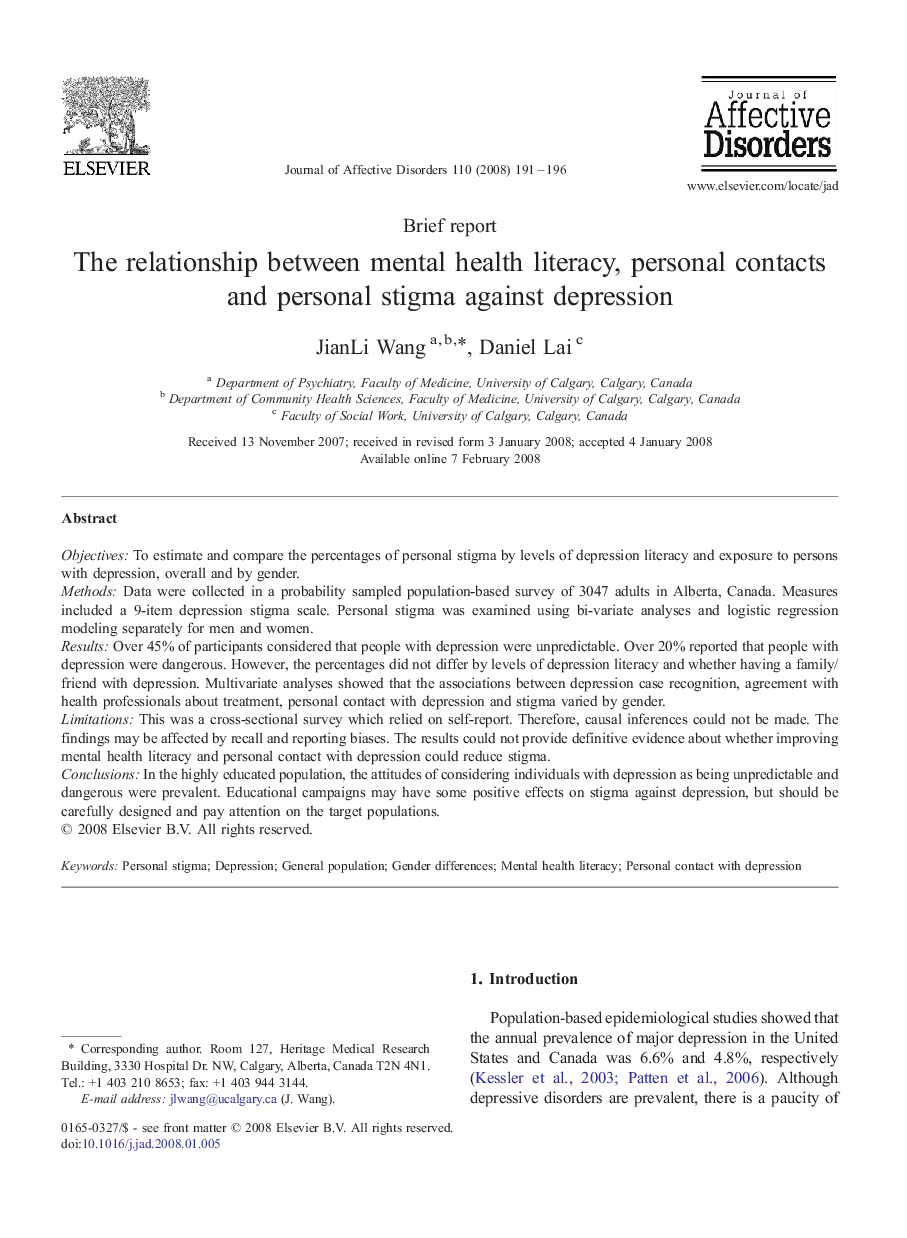| Article ID | Journal | Published Year | Pages | File Type |
|---|---|---|---|---|
| 4187412 | Journal of Affective Disorders | 2008 | 6 Pages |
ObjectivesTo estimate and compare the percentages of personal stigma by levels of depression literacy and exposure to persons with depression, overall and by gender.MethodsData were collected in a probability sampled population-based survey of 3047 adults in Alberta, Canada. Measures included a 9-item depression stigma scale. Personal stigma was examined using bi-variate analyses and logistic regression modeling separately for men and women.ResultsOver 45% of participants considered that people with depression were unpredictable. Over 20% reported that people with depression were dangerous. However, the percentages did not differ by levels of depression literacy and whether having a family/friend with depression. Multivariate analyses showed that the associations between depression case recognition, agreement with health professionals about treatment, personal contact with depression and stigma varied by gender.LimitationsThis was a cross-sectional survey which relied on self-report. Therefore, causal inferences could not be made. The findings may be affected by recall and reporting biases. The results could not provide definitive evidence about whether improving mental health literacy and personal contact with depression could reduce stigma.ConclusionsIn the highly educated population, the attitudes of considering individuals with depression as being unpredictable and dangerous were prevalent. Educational campaigns may have some positive effects on stigma against depression, but should be carefully designed and pay attention on the target populations.
